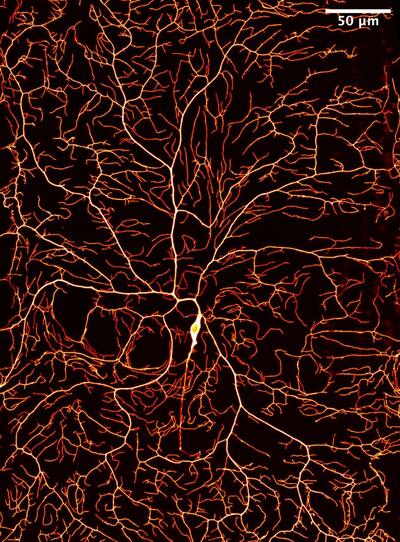
The architecture of the brain and its constituent neurons is staggeringly complex. This complexity is enabled by the highly branched morphologies of dendrites and axons, which allow each neuron to connect to thousands of other neurons. We recently showed, using Drosophila sensory neurons as a model system, that the branching, growth, and retraction of dendrite tips can generate many of the morphological features of dendrites including the rate of growth of their arbors during development, and the average length, density, and orientation of their branches (Shree et al. 2022, Ouyang et al. in preparation). Branch diameters, another important morphological feature of neurons, change systematically across branch points, which facilitates the distribution of materials and nutrients through the network (Liao et al. 2019). Furthermore, neuronal dendrites have a scale-invariant network architecture that optimizes their function and metabolism (Liao et al. 2023).
Currently, we are using genetic perturbations and high-resolution imaging to elucidate the role of the microtubule cytoskeleton in generating dendrite morphology.